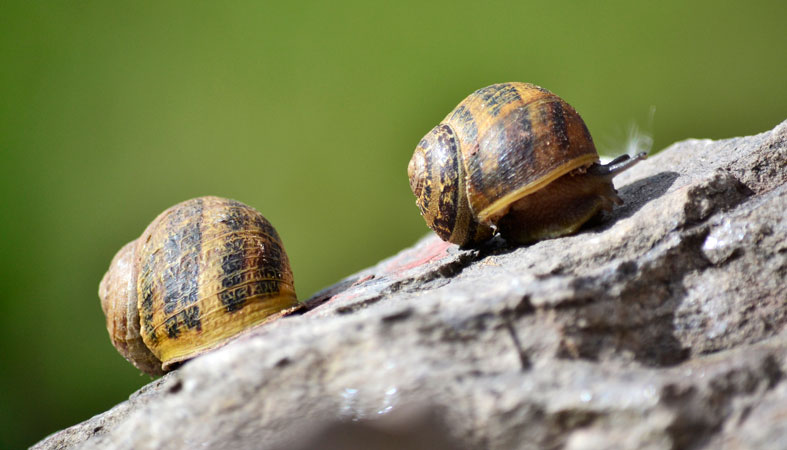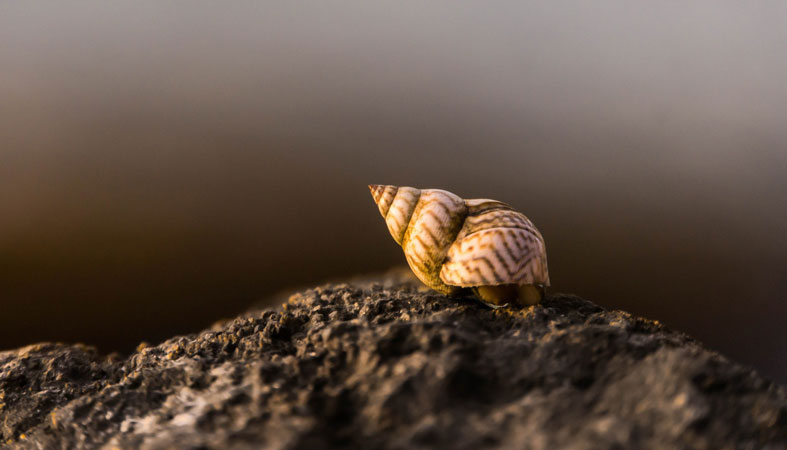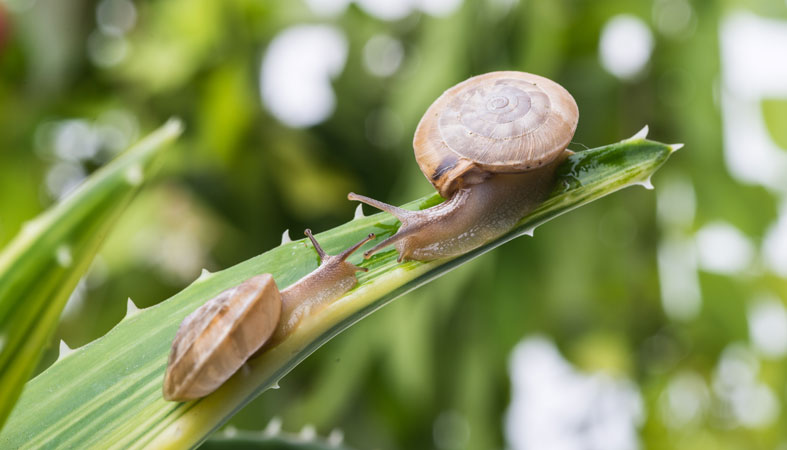Congratulations, you have googled one of the most random topics ever.
Perhaps you have a pet snail, or you’ve noticed a herd of them in your garden after a spot of rain or on a dewy morning? Where did they come from? It almost seems like they magically appear.
So, without further ado, let’s get to answering your most burning questions about these creatures (which are part of the Mollusca family), beginning with how long does a snail sleep.
How Long Do Snails Sleep?
When we think about how long animals sleep, we tend to group them into a daily 24-hour cycle. That’s not ethnocentric or anything; it’s because our days naturally run in cycles that last 24 hours. However, gastropods don’t give a darn about the sun and its schedule.
Instead, they’ll sleep in off and on for several hours at a time, and then have a marathon wake session that lasts around 30 hours.
They also hibernate, and we’ll get to how long that period lasts in a moment.
Snail Sleeping Habits
You’ve probably noticed that these gastropods tend to make appearances only when there’s moisture around. Being in a moist environment is crucial to their survival, and they’ll often schedule their sleep around weather conditions. That’s why you’ll see bursts of activity from them, and then they disappear for a day or two.
Good thing these guys don’t have jobs.
Hibernation and Estivation
They can hibernate for periods of up to three years, which seems likes an incredible amount of time. Again, this is their survival instinct kicking in. If the conditions aren’t favorable, they’ll stay asleep until it’s safe to come out.
You already know that they need moisture to survive, so during hibernation and sleep, they do something called estivation, which is when they curl up inside their shell and secrete a layer of mucous that keeps them protected from external conditions.

Other Fun Facts about Snails
Snails Do Not Copulate
Well, that’s not entirely true.
Here’s the thing: snails are hermaphrodites, meaning they have both male and female sex organs. This means they can technically reproduce on their own, but they need help with the fertilization of their eggs. This is where the mating comes in.
This hermaphroditic species still needs to do the deed in order to get their eggs to hatch. What’s interesting about this is the battle that goes on between two of them as they decide who gives the semen and who receives.
In general, the healthier of the two in this relationship will be the giver of semen as they don’t want weak or sick semen becoming a daddy to their tribe. However, until we can communicate with these magical creatures, we’ll never know all the details of this negotiation.
Here’s another interesting tidbit to note: their mating rituals last from one to three hours. It turns out they do everything slowly!
They Can’t Hear
Have you ever tried talking to one of them? Turns out that they can’t hear you. They can, however, see so maybe they’ll still be able to pick up on your body language when you try to communicate.
They Don’t Like the Sun
Because they need moisture to survive, they avoid the sun. They’re like your weird Aunt Peggy that walks around with an umbrella with the sun out. Except, instead of an umbrella, these little guys have shells.
Unbelievable Sizes
Most of your garden varieties have a shell that’s an inch or less in diameter, but some species like the Syrinx aruanus, also known as the trumpet snail, is a sea variety with a shell that can span 30 inches. Still, others are microscopic!

Salt Can Kill Them
Salt dries them out and kills them quickly and painfully. Most kids have at one time, or another poured salt on a snail. That’s just mean. Don’t do it and don’t let your kids do it. There’s a special place in the afterlife for cruel people that torture helpless and innocent animals.
They Love to Eat Plants
They wreak havoc on gardens and love to eat plants. They’ve got a list of about 500 types that are on their list of favorites. They also consume about any algae they can find.
They Are Strong
Have you ever tried to pick one up off of the ground? They give a whole new meaning to the term bearing down. They are incredibly strong, and can also lift ten times their weight. Don’t mess with these guys. They’d mess you up if they had hands or teeth or could chase you.
They Have a Great Family
They’re part of the Molluscan family, which includes about 200,000 species. Snails and slugs are called gastropods. They can live on both land and sea, and their relatives span six continents. If you count the surrounding waters of Antarctica, it could technically be all seven.
Grown with Shells
The shell is an intrinsic part of the body and is technically one of the organs. When the baby is born, it’s thin and translucent. Over the course of its life, it begins to harden. The babies will eat their eggshells in order to help stimulate the growth of their own shell.
Frequently Asked Questions
How long does a snail live?
As long as they don’t get stepped on or poisoned with garden pesticides, they can live approximately 15 years. Some have gone on record as being 25 years old. This seems like an abnormally long time, so perhaps there is something to be said for living the slow life.

Do snails sleep at night?
They don’t seem to keep the same sleep-wake cycle than other creatures, who sleep in predictable patterns at night or during the day. Instead, they sleep in spurts that coincide with environmental conditions. When those conditions are favorable, it can remain active and awake for 30 or more hours at a stretch.
Because they like moisture and dislike the sun, it’s logical that they would be more active at night than during the day.
Do snails sleep upside down?
They can sleep upside down if that’s what the conditions call for. We’re not referring to them being upside down on their shell with their body exposed. Rather, it’s when they climb on a leaf, for example, and hang upside down from it. This behavior is common when ground conditions aren’t ideal. They may be too hot or too cold for them to sleep comfortably, so they look for a spot that’s better suited for them.
Conclusion
Snails are complicated creatures, and their existence goes far beyond eating leaves in the garden. What we found particularly surprising in our research is how long they live and how long they can stay asleep. Bears have nothing on snails!

Olivera Jancikin
Content Writer
About Author
Olivera is a content writer for Sleep Advisor and is enthusiastic about sleep. She firmly believes in the benefits of daytime naps on top of getting a full 8-hour sleep at night.
Combination Sleeper
